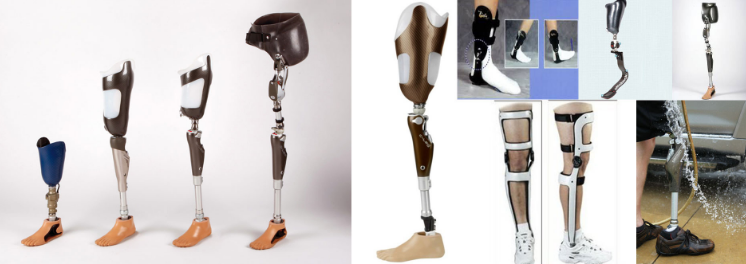You probably have seen some of your friends having prosthetic legs or hands. Have you wondered with those artificial limbs how do they easily manage their regular activities? Prosthetic limbs are one of the greatest inventions to support human beings and tremendously become a huge helping hand in making one’s life easier while ensuring dignity and prestige.
Modern artificial limbs work much effectively, also the aesthetics are more convincing and good looking. People with prosthetic limbs can be seen doing regular work such as walking, swimming, climbing stairs and even running. In addition to the tremendous advanced level you will notice in a prosthetic arm, where you can see people with prosthetic arms have a complete control to their finger movements.
Here is a brief about the prosthetic limbs:
- What is a Prosthesis?
The prosthesis is a great invention of biomechatronics. A prosthesis or prosthetic limb is used in the replacement of a missing limb (hand or leg) to accommodate the loss of body parts. There can be many cases where a person has to wear a prosthetic limb such as any mishappening or an amputation. Prosthetic limb can help a person to perform his/her regular activities and also in re-building the confidence.
- Types of Prosthesis
Prosthesis is able to replace any part of the body-ear, nose, finger or toe. However, the practice shows that there are four common types of prosthetic limb that replace partial or complete loss of an arm or leg.
Types of Prosthesis:
- BK Transtibial- Below the Knee
- Ak Transfemoral- Above the knee including a knee prosthetic
- BE Transradial- Below the Elbow
- AE Transhumeral- Above the Elbow also includes a prosthetic elbow
- How does it work?
Technologies such as 3D printing, responsive sensors, etc. have been helpful in enhancing the world of the prosthesis. They are simply helpful in creating and designing a prosthetic limb with better functionalities.
There are four major sub-parts that are responsible to manage prosthetic limb specific functionalities. It includes the body of the limbs, a socket, an attachment mechanism and a control system.
- Body of the limb
Determining the right weight of the body of the limb is essential in order to maintain a balance with the human body. For that, you need to consider that the material should not be hard during the formation of a prosthetic limb. Hence, carbon fiber covered with foam or a plastic covering is mostly used to accommodate the actual weight of the person.
- Socket
Socket is the connecting part of the prosthesis and is formed around the plaster cast near the residual limb for a perfect measurement. A proper fitting is essential to ensure the proper functionalities. Also, laser scanning is used to get a virtual 3D diagram. A chemical element called silicon is used to create a liner and is then attached to the residual limb for a better arrangement.
- Attachment mechanism
An electric suction, a strap or harness are the form of suspensions used to ensure the proper fit of socket. You can also say that a socket is a part of the suspension. Basically, attachment mechanism holds all the parts for a faultless fit and better functionality.
- Control system
A prosthetic limb is controlled by cables that exist in the prosthetic limb itself, to receive electronic signals which are helpful for the movement. Also, The prosthesis is operated by an electric motor.
Prosthetic limb is a great achievement in biomechatronics and enabling human beings to regain their confidence even after losing an essential body part.

